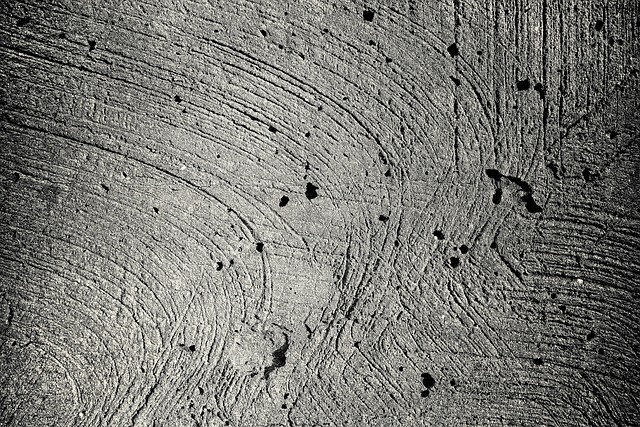Insulated Concrete Forms (ICFs) offer a high-performance building solution that significantly boosts energy efficiency through combined insulation and concrete walls. They provide superior thermal mass, which outperforms traditional construction methods in terms of R-value for equivalent insulation, leading to lower heating and cooling costs. ICFs ensure minimal heat transfer, maintaining stable indoor temperatures year-round, which enhances occupant comfort and energy conservation. These forms are particularly effective in regulating indoor temperatures in climates with extreme weather variations, reducing the need for HVAC usage. ICFs are not only durable against environmental stressors but also adaptable to various building types, making them a sustainable choice for resilient construction that prioritizes energy efficiency. Their integration into architectural design allows for the absorption and release of heat, further contributing to temperature stability and reducing energy consumption. ICFs represent a scientifically endorsed approach in sustainable architecture, aligning with the goals of energy conservation and providing a comfortable living environment.
Exploring the synergy between thermal mass and insulation, this article delves into the transformative potential of Insulated Concrete Forms (ICFs) in enhancing energy efficiency. We will dissect their scientific principles, explore various insulation materials, and assess the financial and environmental benefits they offer. From constructing robust residential and commercial buildings to providing seasonal energy optimization strategies, this comprehensive guide covers it all. Join us as we uncover how ICFs stand out in the realm of sustainable building practices, highlighting real-world savings, maintenance tips, and the latest technological advancements in this field. Whether you’re a homeowner, builder, or industry professional, understanding the nuances of ICF construction is key to embracing energy efficiency and reducing your carbon footprint.
- Unlocking Energy Efficiency with Insulated Concrete Forms (ICFs)
- The Science of Thermal Mass and Its Role in Energy Conservation
Unlocking Energy Efficiency with Insulated Concrete Forms (ICFs)

Insulated Concrete Forms (ICFs) represent a significant advancement in construction technology, offering a dual-layered approach to improving energy efficiency in buildings. These forms consist of a high-performance thermal insulation sandwiched between two structural concrete faces, creating a composite wall system that excels both as an insulator and as a structural element. The integration of ICFs in building design leads to substantial reductions in heating and cooling costs due to the superior thermal mass properties they possess. Unlike traditional construction methods that may require additional insulation to achieve comparable R-values, ICFs inherently provide exceptional insulation values, effectively reducing heat transfer and maintaining a stable indoor temperature year-round. This stability not only enhances comfort for occupants but also significantly contributes to energy conservation, making ICFs an attractive choice for those prioritizing sustainable and energy-efficient construction practices.
Furthermore, the robustness of ICFs ensures that they are not merely a seasonal solution but a year-round performer. The thermal mass of ICF walls can absorb and release heat as needed, which is particularly beneficial in regions with extreme temperature fluctuations. This unique property allows for a more consistent indoor climate, further reducing the strain on HVAC systems and lowering energy consumption. Additionally, ICFs are versatile and can be used in various types of buildings, from residential homes to commercial complexes, making them a versatile solution in the pursuit of energy efficiency. Their durability and resistance to environmental elements such as wind, rain, and even seismic activity make them an ideal choice for those looking to build with both longevity and energy savings in mind.
The Science of Thermal Mass and Its Role in Energy Conservation

Incorporating thermal mass into building design is a scientifically grounded strategy that significantly enhances energy efficiency. Thermal mass refers to materials with high heat capacity, like concrete and brick, which can absorb and store substantial amounts of heat from the sun during the day and gradually release it during cooler periods. This property plays a crucial role in maintaining a stable indoor temperature, thereby reducing the need for heating or cooling systems to compensate for temperature fluctuations. The Insulated Concrete Form (ICF) is an advanced construction method that embodies this principle. ICFs consist of pre-molded foam insulation tied together with steel reinforcement, creating R-value ratings much higher than traditional forms of construction. This results in less energy loss through walls and a more consistent indoor climate. The high-quality insulation within the ICF system further enhances its energy efficiency by minimizing thermal bridging, a process where heat passes through structural elements, leading to potential energy waste. By integrating thermal mass with superior insulation, buildings constructed using the ICF method can achieve remarkable reductions in energy consumption for heating and cooling, making them an environmentally sustainable choice for modern architecture. This synergy between thermal mass and effective insulation not only contributes to energy conservation but also promotes a more comfortable living environment, reducing reliance on energy-intensive HVAC systems and aligning with the broader goals of sustainability and energy efficiency.
In conclusion, the integration of Insulated Concrete Forms (ICFs) and an understanding of thermal mass principles represent a significant advancement in energy efficiency for residential and commercial buildings. The article has explored how ICFs serve as a barrier against extreme temperatures, effectively moderating indoor climates and reducing energy consumption. Coupled with the scientific underpinnings of thermal mass, which naturally stores and releases heat, the synergy between these two elements can lead to substantial savings on heating and cooling costs while promoting environmental sustainability. Homeowners and builders alike are encouraged to consider ICFs as a viable solution for enhancing energy efficiency in new construction or retrofitting existing structures. By doing so, they contribute to a reduced carbon footprint and more comfortable living spaces, making the choice to implement these technologies both cost-effective and eco-conscious.
